I am attempting to create two methods in WebApi2 that will take data into an object and return a token.
The Get Command works perfectly.
[HttpGet]
[Route("refresh")]
public HttpResponseMessage refresh([FromUri] oAuthTokenRequest tokenItem)
{
var device = new ConnectedDevices();
var AuthString = device.getAuthorization(Request.Headers.Authorization.Parameter);
var serviceKey = new ServiceKeyManagement();
var accessToken = new oAuthAccessResponse();
var response = Request.CreateResponse(HttpStatusCode.Forbidden, "Unknown", "application/json");
var clientID = AuthString[0];
var errorResponse = new oAuthErrorResponse();
var oauth = new oAuthAuthenticationCode();
String email = String.Empty;
var tokenRequest = new oAuthTokenRequest();
Log.Debug("oAuth REST API GET: Refresh: Authorization Parameter: " + Request.Headers.Authorization.Parameter, this);
Log.Debug("oAuth REST API GET: Refresh: clientID: " + clientID, this);
Log.Debug("oAuth REST API GET: Refresh: Request: " + Request.RequestUri, this);
if (!serviceKey.isValidServiceKey(clientID, AuthString[1]))
{
errorResponse.error = oAuthCodes.ErrorCodes.unauthorized_client.ToString();
errorResponse.error_description = "Invalid Service Key";
errorResponse.error_uri = String.Empty;
response = Request.CreateResponse(HttpStatusCode.Forbidden, errorResponse, "application/json");
response.ReasonPhrase = "refresh: Invalid Login Request.";
} // end of if (!serviceKey.isValidServiceKey(clientID, AuthString[1]))
else
{
Log.Debug("oAuth REST API GET: Refresh: NameValuePairs: " + tokenItem.grant_type, this);
tokenRequest.redirect_url = tokenItem.redirect_url;
tokenRequest.code = tokenItem.code;
tokenRequest.grant_type = tokenItem.grant_type;
tokenRequest.clientID = clientID;
response = tokenValidation(tokenRequest, clientID);
} // end else for if (!serviceKey.isValidServiceKey(clientID, AuthString[1]))
return response;
} // end of public HttpResponseMessage Login(ConnectedDeviceViewModel login)
This reads in the variables from the URI, and then parses them into the object.
The Post command is not doing that:
[HttpPost]
[Route("refresh")]
public HttpResponseMessage refreshPost([FromBody] oAuthTokenRequest tokenItem)
{
var device = new ConnectedDevices();
var AuthString = device.getAuthorization(Request.Headers.Authorization.Parameter);
var serviceKey = new ServiceKeyManagement();
var accessToken = new oAuthAccessResponse();
var response = Request.CreateResponse(HttpStatusCode.Forbidden, "Unknown", "application/json");
var clientID = AuthString[0];
var errorResponse = new oAuthErrorResponse();
var oauth = new oAuthAuthenticationCode();
String email = String.Empty;
var tokenRequest = new oAuthTokenRequest();
Log.Debug("oAuth REST API: Refresh POST: Authorization Parameter: " + Request.Headers.Authorization.Parameter, this);
Log.Debug("oAuth REST API: Refresh POST: clientID: " + clientID, this);
Log.Debug("oAuth REST API: Refresh POST: Request: " + Request.RequestUri, this);
if (!serviceKey.isValidServiceKey(clientID, AuthString[1]))
{
errorResponse.error = oAuthCodes.ErrorCodes.unauthorized_client.ToString();
errorResponse.error_description = "Invalid Service Key";
errorResponse.error_uri = String.Empty;
response = Request.CreateResponse(HttpStatusCode.Forbidden, errorResponse, "application/json");
response.ReasonPhrase = "refresh: Invalid Login Request.";
} // end of if (!serviceKey.isValidServiceKey(clientID, AuthString[1]))
else
{
Log.Debug("oAuth REST API POST: Refresh: NameValuePairs: " + String.Join(" : ", Request.GetQueryNameValuePairs().ToList()), this);
tokenRequest.redirect_url = tokenItem.redirect_url;
tokenRequest.code = tokenItem.code;
tokenRequest.grant_type = tokenItem.grant_type;
tokenRequest.clientID = clientID;
response = tokenValidation(tokenRequest, clientID);
} // end else for if (!serviceKey.isValidServiceKey(clientID, AuthString[1]))
return response;
}
The post works perfectly if this is JSON that is being sent. I have tried the signature various ways:
[HttpPost]
[Route("refresh")]
public HttpResponseMessage refreshPost([FromBody] oAuthTokenRequest tokenItem)
[HttpPost]
[Route("refresh")]
public HttpResponseMessage refreshPost(oAuthTokenRequest tokenItem)
[HttpPost]
[Route("refresh")]
public HttpResponseMessage refreshPost(FormDataFormat oAuthTokenRequest tokenItem)
In each case, if I try to send the following request:
POST /api/TokenAuthorization/refresh HTTP/1.1
Host: localhost.www.bissell.com
Authorization: Basic U21hcnRDbGVhbkFsZXhhOlJOWFpfaEFQWUhBVHpVTTc1STVrdDVQcmlEUkkzV0VtdG5FX1dCS0ZiaUEtVGRBVXZtMWZzNldKRV9ZOFJXajVicEVnbmxpdmp2eWJsNkRYelhEYmR1SXB0d0VGV2IwbDRWbXpBWFI3d1VxX2twaklzLTQ4SDRfTnc2Q2YtNy1ZaVpWcU9RSGlBNjFmUWI0MWJoNU1vUjVFd0hMMExZam8tVkszWXJRa3RabWlPb0pTSXVNdWtRazJ2Tjl3MFFmdF9YTWRuUHY5eDNXRFBtMlB0TURSV2VhMVZOUXpDeVFzd0xJRFhtaU1ZbmVhNFBQZ2V3cHp0UmNFU2RjVVlMY0puQVZ5SF90TS01TUg5ZVcwOWRFNmtjMV9BSWRDc3FUcHQwTHB5V1ltVFpjVEVGcGtkdlBwSWJ1N21Od3ZWb0tCU2hZZ0RabEdpQ1dzNVVoM25DbGVVVE5FdXVNaVJiVUdsUWJIVEJKdmtWUmNQbk9qZzJSRHA5ZjBwTml3ZU1fOEthazlQRU1pNXNuSkFMaFo5bWFQTmRVTVNMaXQ1T1VkbVZYVDhuckU5eVdWN1cyS1J2bDh0ZnFsX0Z0OVVNWWFfRjI3TTlGV2dFdm9FbndZV3RyVlgxYkxPdWk1QUlFNVU3OGhzd3loYk5TMkJzRnN2Sk5YaU9icExRa2NESWNrN3g4OWVCaUdsUGNSbGkxdDRBbEVfWER6ZDFzcVNwcURWdjR2NGJwRklYUFRaWXh6MzlhSFl1akdaXzhmMW5QRjYzN3d4WFNDcU52SkpublZYRWR1T1Ey
Content-Type: application/x-www-form-urlencoded
Cache-Control: no-cache
Postman-Token: 434aa7f2-a3d2-ce43-d300-001d61be4562
grant_type=authorization_code&code=20620A62853B45B9BEEA6E67C7587BC1%3AC0DB652683B5ACB67797A42D3DDB4D03ABA0561100137DB812602C57E17736E72D6E1E35D5A56C7F67B1760EA33A539D932C7A96A1853E4E103118F41D004D7E&redirect_url=abc&clientID=abc&clientSecret=abc
I get the following error
"ExceptionMessage": "This method or property is not supported after HttpRequest.Form, Files, InputStream, or BinaryRead has been invoked.
My WebApiConfig.cs looks like this:
public static class WebApiConfig
{
public static void Register(HttpConfiguration config)
{
config.MapHttpAttributeRoutes();
config.Routes.MapHttpRoute(
name: "DefaultApi",
routeTemplate: "api/{controller}/{id}",
defaults: new { id = RouteParameter.Optional }
);
var json = config.Formatters.JsonFormatter;
json.SerializerSettings.PreserveReferencesHandling = Newtonsoft.Json.PreserveReferencesHandling.Objects;
config.Formatters.Remove(config.Formatters.XmlFormatter);
}
}
I have looked high and low on the internet and everything they say is what I am doing. So, I am guessing that I am missing something basic, most likely in the WebApiConfig. Any help would be greatly appreciated.
Update So, this is not the way that I want to do the code, however, I did find this solution: Is there a way to handle form post data in a Web Api controller?
var httpctx = (HttpContextWrapper)Request.Properties["MS_HttpContext"];
tokenRequest.redirect_url = httpctx.Request.Form["redirect_url"] ?? null;
tokenRequest.code = httpctx.Request.Form["code"] ?? null;
tokenRequest.grant_type = httpctx.Request.Form["grant_type"] ?? null;
tokenRequest.clientID = clientID;
